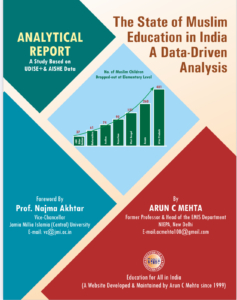Should Educational Institutions Be Subject to GST?
An Evaluation of Recent Calls for Exemption and a Comprehensive Analysis of GST in India
Introduction
Education is a cornerstone of societal development, yet India faces financial pressures from taxation policies like GST. On August 17, 2025, The Economic Times reported G. Viswanathan’s appeal during VIT Chennai’s 15th anniversary celebrations to exempt educational institutions from GST. He argued that such an exemption would lower fee structures, benefiting low- and middle-income families, as institutions like VIT incur substantial costs – ₹400 crore annually—on taxable inputs without commensurate returns from the government. This call resonates amid India’s push for inclusive growth, where education spending remains low at 2.5% of the Union Budget, compared to the state’s 21% allocation. Actor Kamal Haasan, the event’s chief guest, emphasized fostering resilience in youth, underscoring education’s role beyond mere taxation. This article evaluates the G. Viswanathan’s, statement, and VIT’s growth from 640 students in 2010 to over 22,000 today, while delving into GST’s framework to assess if exemptions are warranted.
Origin, Genesis, and Objectives of GST
The Goods and Services Tax (GST) in India originated from long-standing discussions on tax reform to address the inefficiencies of the pre-existing indirect tax regime, which included multiple levies like Value Added Tax (VAT), excise duty, service tax, and central sales tax. The genesis traces back to the Kelkar Task Force’s recommendations in 2004, advocating a unified tax system. After extensive deliberations, the Constitution (101st Amendment) Act, 2016, enabled GST’s implementation on July 1, 2017, marking a shift to a destination-based, multi-stage tax.
The primary objectives of GST include simplifying the tax structure by subsuming various taxes into one, eliminating cascading effects, enhancing compliance through digital mechanisms like the GST Network (GSTN), boosting revenue collection via a broader tax base, and promoting economic integration under the “One Nation, One Tax” principle. It aims to foster transparency, reduce tax evasion, and support the formalization of the economy, ultimately contributing to higher GDP growth.
Existing Heads on Which GST is Levied on Educational Institutions and Applicable Rates
Core educational services provided by recognized institutions – such as tuition for pre-school to higher secondary levels and approved vocational courses – are exempt from GST under Notification No. 12/2017-Central Tax (Rate). However, auxiliary and commercial services attract GST, increasing operational costs that institutions often pass on to students. Below is a detailed list of key heads and their rates as of 2025:
- Construction of Buildings: Taxed at 18% on contracts for infrastructure development, as institutions procure services for expansion.
- Installation of Air Conditioners and Similar Equipment: Levied at 28%, applicable to fittings in classrooms or hostels.
- Private Coaching and Training Institutes: 18% on fees for non-exempt courses like competitive exam preparation.
- Online Educational Services: 18% on paid digital courses or e-learning platforms.
- Canteen and Food Services: 5% on supplies within institutions, without input tax credit.
- Hostel Accommodation (if outsourced or commercial): 18% if not part of exempt educational services.
- Sale of Educational Materials (e.g., Notebooks, Pencils): Varies; notebooks at 12%, pencils at 12% under relevant HSN codes.
- Accreditation and Examination Fees (by boards): 18% on non-exempt administrative services.
These rates reflect the 55th GST Council recommendations, with exemptions limited to direct educational outputs.
GST Collections Since Inception
GST collections have grown robustly since their launch in July 2017, driven by improved compliance and economic recovery. However, sector-specific data for education is sparse; the government collected ₹4,792 crore from non-exempt education services in FY 2023-24 alone. Overall collections (in ₹ lakh crore) are presented below, as education contributes indirectly through inputs:
| Financial Year | Gross GST Collection (₹ Lakh Crore) | Growth Rate (%) | Notes on Education Contribution |
|---|---|---|---|
| 2017-18 (Partial) | 7.41 | – | Initial rollout; minimal education-specific data. |
| 2018-19 | 11.77 | 58.8 | Rising due to stabilization. |
| 2019-20 | 12.22 | 3.8 | Impacted by COVID-19. |
| 2020-21 | 11.37 | -6.9 | Pandemic dip. |
| 2021-22 | 14.83 | 30.4 | Recovery phase. |
| 2022-23 | 18.10 | 22.0 | Strong growth. |
| 2023-24 | 20.18 | 11.5 | ₹4,792 crore from non-exempt education services. |
| 2024-25 | 22.08 | 9.4 | Record high; average monthly ₹1.84 lakh crore. |
Present status (as of FY 2024-25): Collections stand at ₹22.08 lakh crore, doubling from ₹11.37 lakh crore in FY 2020-21, reflecting a compounded annual growth rate of about 14%. Education’s absolute contribution remains under 0.5% of total, but input taxes burden institutions significantly.
Review of Literature
Literature on GST’s impact on education highlights mixed outcomes. A 2024 research study on ResearchGate analysed GST’s effects on institutions, noting increased costs for private entities but exemptions aiding affordability in core services. Another paper emphasized unintended burdens on higher education, advocating comprehensive exemptions for allied services like hostels. Budget 2025 expectations from industry leaders like PhysicsWallah’s co-founder called for a 100% GST exemption on educational expenses to reduce student burdens. Overall, studies underscore GST’s role in revenue but criticize its regressive impact on education access.
Reasons Why GST Should Not Be Imposed on Educational Institutions, Pros, and Cons
Reasons Against Imposition
- Social Welfare Priority: Education is a public good; taxing inputs raises fees, exacerbating inequality in a country with low per capita GDP (12.5 times below Japan’s, as per Viswanathan).
- Financial Strain: Institutions pay without refunds, leading to ₹400 crore annual outflows for VIT alone, diverting funds from quality enhancements.
- Global Competitiveness: Exemptions align with international norms where education is tax-free, aiding India’s goal of becoming a knowledge economy.
- Constitutional Ethos: Article 21A mandates free education; GST indirectly hinders this.
Pros of Imposing GST
- Generates revenue for public spending (e.g., ₹4,792 crore in FY24 from education).
- Ensures uniformity and prevents evasion in commercial education segments.
- Allows input tax credits in some cases, promoting formalization.
Cons of Imposing GST
- Increases costs for students, reducing enrollment in higher education.
- Disproportionately affects private institutions, widening public-private gaps.
- Contradicts NEP 2020’s affordability focus.
GST Liabilities for Students in India and Studying Abroad
In India, students pay GST indirectly through fees incorporating taxes on non-exempt services: 18% on coaching classes, 18% on online courses, 5% on canteen meals, and varying rates on materials like books (5-12%). Core tuition at recognized institutions remains exempt.
For students going abroad, no direct GST applies on tuition remittances, but Tax Collected at Source (TCS) under Income Tax Act is levied: 0.5% on education loans exceeding ₹7 lakh, and 5% on other remittances above ₹7 lakh (post-Budget 2025 updates). Indian education Consultants charging for overseas consultancy may add 18% GST if services are domestic, though commissions from foreign universities qualify as exports and are exempt. This adds to the financial load for international education.
Concluding Observations
GST has revolutionized India’s tax landscape, but imposes undue burdens on education, a sector vital for reducing disparities. The Prime Minister’s Independence Day speech on August 15, 2025, announced reforms to the existing tax structure, including a two-rate GST system (potentially 12% and 18%), rate rationalization, and reductions by Diwali 2025 as a “gift” to citizens, aiming for ease of living and lower burdens. This proposal opens avenues for education-specific relief. While educationforallinindia.com focuses on enrollment trends and policies like NEP 2020 without explicit tax suggestions, its advocacy for inclusive access implies support for exemptions to enhance affordability. Overall, balancing revenue needs with educational equity is crucial.
Suggestions
To align with the PM’s reforms, suggestions include:
- Full GST exemption on all educational inputs and services, enabling input tax credits.
- Zero-rating education under GST for exports like online courses.
- Dedicated education cess rebates.
- Subsidies for infrastructure in underserved areas.
These would reduce fees by 10-15%, boosting enrollment.
Suggested Readings
- “Study of the Impact of Goods and Services Tax on Educational Institutions” by Researchers on ResearchGate (2024).
- “GST on Education Services: Tax Rates & Exemptions Explained” by Razorpay Learn (2024).
- “An Analysis of GST Implementation and Trends in Revenue Collection” by EPRA Journals (2024).


